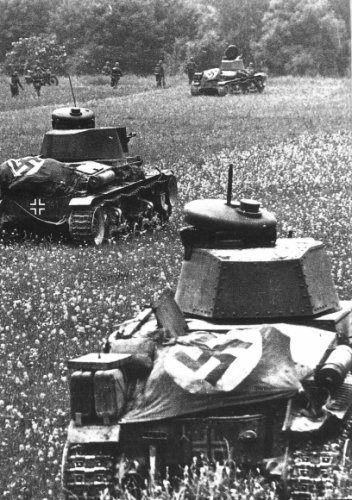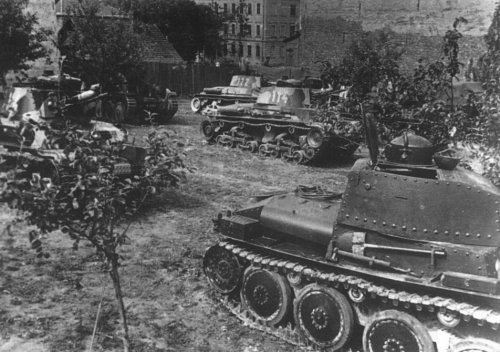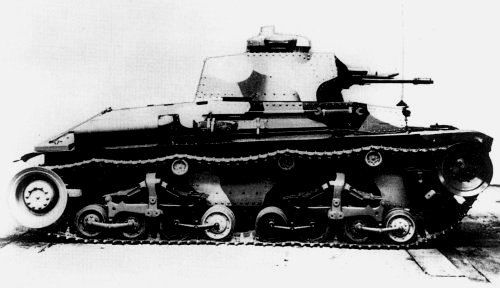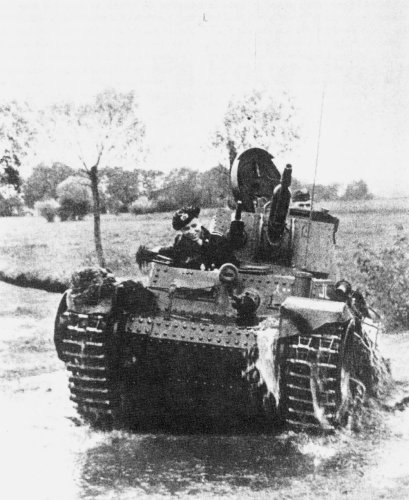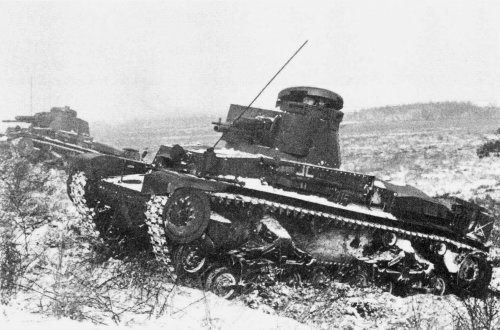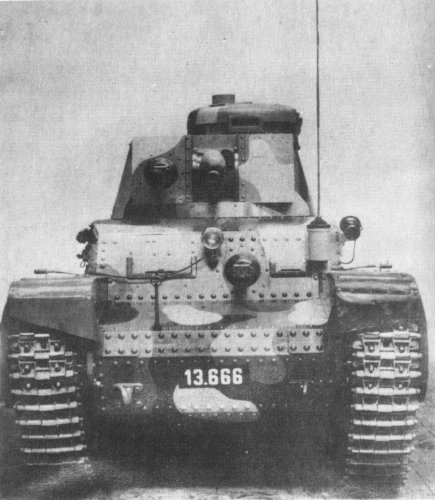Panzerkampfwagen 35(t)
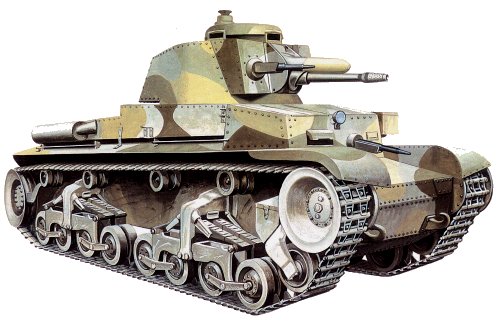
|
The LT vz 35 originated in October 1934 from a Czech army order to CKD
(Ceskomoravska Kolben Danek) for a medium tank. Two prototypes, the
S-11-a (or T-11), were produced in June 1935 and sent to the army for
tests. Possibly as a reaction to Germany's rearmament program, the
Czech army ordered 160 vehicles in October 1935 despite the tank's
many glitches resulting from hasty development and introduction of
innovative features. CKD delivered the first five vehicles in 1936, but
they were so unreliable that they had to be sent back for improvement.
Eventually the technical problems were corrected and the Czech army
ordered another 138 tanks, now designated LT vz 35. Romania also placed
an order for 126 and called the vehicle R-2. In 1939 Germany overran
Czechoslovakia and incorporated its productive arms industry. The
mouthful Ceskomoravska Kolben Danek was renamed Skoda by the German
army, which also confiscated 219 LT vz 35, now dubbed Panzerkampfwagen
35(t) (t for tschechoslowakish), from the Czech army. Many
PzKpfw 35(t) saw action in Poland and in France with the 6th Panzer
Division. They served as tanks until 1942, when the remaining chassis
were reconfigured into mortar tractors (M�rserzugmittel),
artillery tractors (Zugkraftwagen), or maintenance vehicles.
Production continued in Hungary and Romania until 1945, when a total of
some 300 had been built. The PzKpfw 35(t), like the PzKpfw I, inherited many ideas from the British Cardon-Lloyd carrier, license-produced by CKD. The tank was equipped with riveted armor plates, which when hit by a heavy projectile could snap the bolts and send them richocheting inside the turret and hull. Armament consisted of a dual-purpose 37.2mm main gun, a co-axially mounted machine gun, and a hull machine gun. The LT vz 35 originally had a crew of three, but the Germans fitted the tank with a radio and added a crewman as radio operator. The commander/gunner could sit but the loader/radio operator had to stand in the turret. The bow machine-gunner sat in the front of the hull on the left, the driver on the right. The rear of the chassis housed the engine and transmission. Interestingly, compressed air was used to help the driver with transmission and steering, making long travels less tiring. Weaknesses include an excessively high profile for its size, the commander's constricted field of vision when the turret hatch was closed, and the pneumatic transmission system that broke down in the Russian winter. Despite its early notoriety of unreliability, the PzKpfw 35(t) was overall an agile, well-armed and armored tank of advanced design. |

